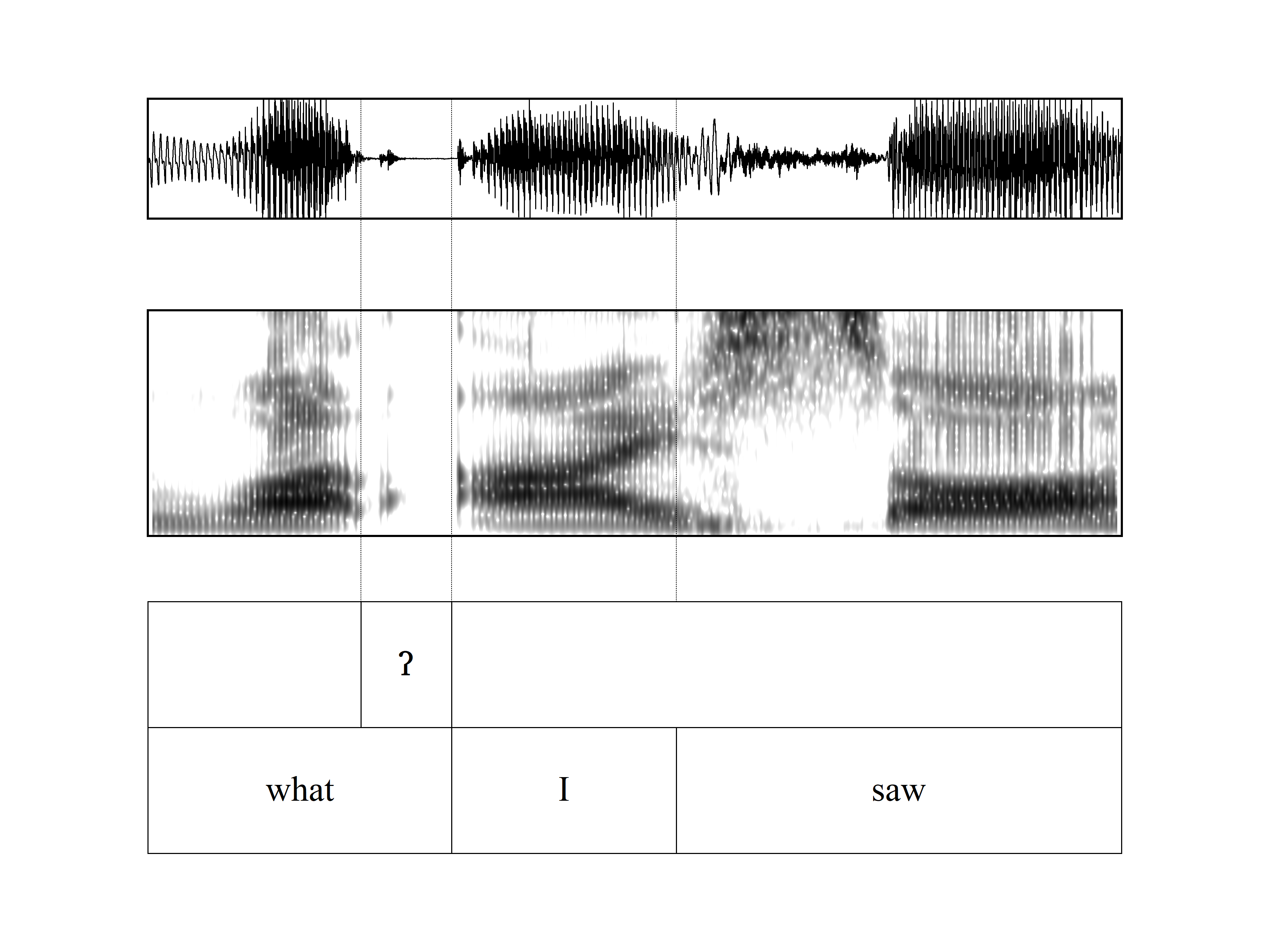Prevocalic t-glottaling across word boundaries in Midland American English
Kamil Kaźmierski/ˌkamil kaʑˈmjɛrski/
Faculty of English at AMU in Poznań
Phon-phon for phun :: October 5th, 2020
kamil.kazmierski@wa.amu.edu.pl
wa.amu.edu.pl/wa/kazmierski_kamil
T-glottaling in American English

Kaźmierski, K, Wojtkowiak, E, Baumann, A. 2016. "Coalescent assimilation across word boundaries in American English and in Polish English." Research in Language 14(3): 235-262. DOI: 10.1515/rela-2016-0012
T-glottaling in American English
what I saw
what I saw
[wʌɾaɪsɑː] cf. [wɑːɾɚ] water
what I saw
[wʌɾaɪsɑː] cf. [wɑːɾɚ] water
[wʌɾaɪsɑː] ~ [wʌʔaɪsɑː]

Eddington, D and C Channer. 2010. “American English has goʔ a loʔ of glottal stops: Social diffusion and linguistic motivation.” American Speech 85(3): 338-351.
Why is [ʔ] encroaching on [ɾ] territory?
If it's (almost) always a[ɾ]om, ci[ɾ]y, why do we ever get wha[ʔ] I ?
Hypothesis: Frequent occurrence, and glottaling, before consonants influences the production of words even in before vowels.
wha[ʔ] does, wha[ʔ] was, wha[ʔ] we, wha[ʔ] kind, wha[ʔ] would → wha[ʔ] I
Hypothesis: Frequent occurrence, and glottaling, before consonants influences the production of words even in before vowels.
wha[ʔ] does, wha[ʔ] was, wha[ʔ] we, wha[ʔ] kind, wha[ʔ] would → wha[ʔ] I
Prediction: t-final words often followed by consonants → more likely to undergo t-glottaling.
Hypothesis: Frequent occurrence, and glottaling, before consonants influences the production of words even in before vowels.
wha[ʔ] does, wha[ʔ] was, wha[ʔ] we, wha[ʔ] kind, wha[ʔ] would → wha[ʔ] I
Prediction: t-final words often followed by consonants → more likely to undergo t-glottaling.
Result: Eddington & Channer (2010) confirm it, but there were limitations
Eddington, D and C Channer. 2010. “American English has goʔ a loʔ of glottal stops: Social diffusion and linguistic motivation.” American Speech 85(3): 338-351.
My study: Method
- Data: Buckeye (Pitt et al. 2007)
- 40 speakers, stratified for age (younger, older) and gender from Columbus, OH
- Midland (Labov, Ash & Boberg 2006) dialect area
- Hand-corrected allophonic transcriptions
- Analysis:
- Corpus queerying with Labb-CAT (Fromont & Hay 2012)
- 7,317
Vt#Vbigrams retrieved (no pause in between) - Mixed-effects logistic regression with lme4 (Bates et al. 2015) in (R Core Team 2020)
Ex. 1: Intervocalic /t/ as a glottal stop

Ex. 2: Intervocalic /t/ as an 'incomplete' glottal stop

Data - overview
Articulation rate: Buckeye vs. Santa Barbara

t-glottaling; gender by age effect
## Warning: Using `size` aesthetic for lines was deprecated in ggplot2 3.4.0.## ℹ Please use `linewidth` instead.
Test variable : Consonantal proportion

Model
glottaled ~ consonantal_proportion + rate_deviation + word2_frontness + word2_stress + bigram_frequency + gender * age + (1 | word1) + (1 + consonantal_proportion | speaker)t-glottaling; Contextual frequency effect

Kaźmierski, K. 2020. "Prevocalic t-glottaling across word boundaries in Midland American English." Laboratory Phonology: Journal of the Association for Laboratory Phonology 11(1): 13, 1-23. DOI: 10.5334/labphon.271
Conclusion
Frequent occurrence before consonants enriches the pool of exemplars with [ʔ]
During production, even before vowels, the phoneme /t/ draws on these exemplars
The more frequent the occurrence before consonants, the higher the likelihood the the outcome will be [ʔ]
Thank you!
T-glottaling may be becoming more frequent, and it's driven by a contextual frequency effect

This research was supported by National Science Center (Poland) grant no. UMO-2017/26/D/HS2/00027
kamil.kazmierski@wa.amu.edu.pl